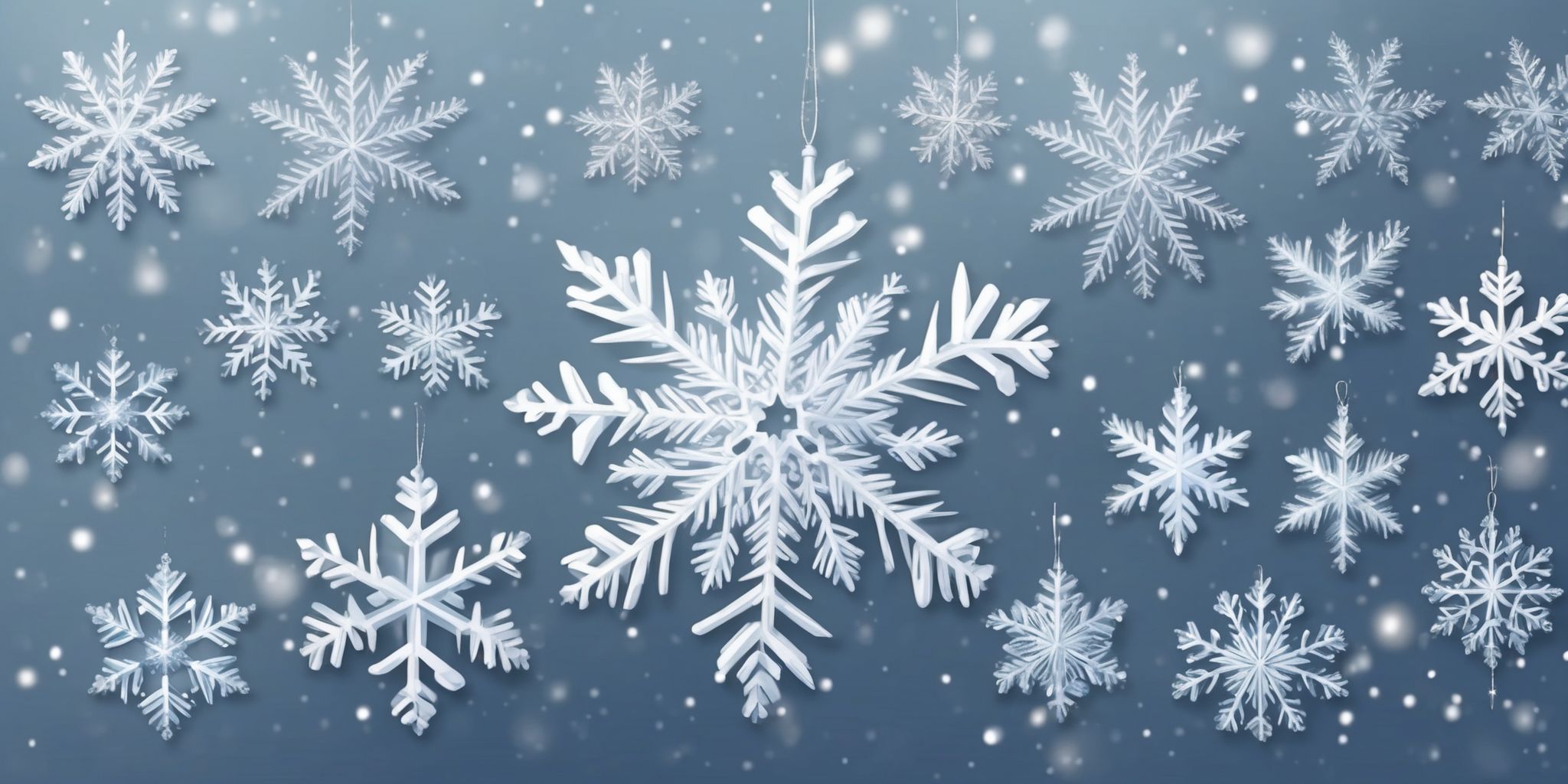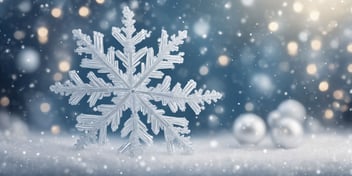- Blog
- Christmas questions
- What is the connection between Christmas and the Winter Solstice?

Ah, the magical time of year when twinkling lights adorn homes, carols fill the air, and the scent of spiced cider wafts through cozy living rooms. Christmas. But have you ever wondered why we celebrate this joyous holiday during the coldest, darkest days of winter? Turns out, there's a fascinating connection between Christmas and the winter solstice, a celestial event that has captured the awe and wonder of humanity since time immemorial.
So, buckle up and get ready to unlock the intriguing history and intertwined traditions that have made Christmas and the winter solstice dance hand in hand throughout the ages.
Exploring the Origins of Christmas
- Christmas originated from a combination of both pagan and Christian traditions.
- Pagan festivals like Yule and Saturnalia celebrated the winter solstice and the return of light and fertility.
- Early Christians adopted December 25th as the birthdate of Jesus to coincide with existing festivities.
- The blending of these traditions allowed for the preservation of ancient customs while adopting new religious significance.
- The concept of gift-giving, feasting, and decorating trees were common elements in both pagan festivals and early Christmas celebrations.
- Understanding the origins of Christmas helps us appreciate the rich cultural tapestry that has shaped this beloved holiday.
Unraveling the Significance of Winter Solstice
The Winter Solstice marks the shortest day and the longest night of the year, and has been observed for centuries. It holds cultural and spiritual importance for many civilizations. This astronomical event symbolizes the rebirth of the sun and the return of longer days. In various cultures, it is seen as a time of reflection, renewal, and celebration.
For example, ancient Romans celebrated Saturnalia, a week-long festival honoring Saturn, while Norse traditions included the Yule feast. Understanding the historical and cultural significance of the Winter Solstice helps us appreciate the deep-rooted traditions and rituals that have influenced the Christmas celebration we know today.
Connections between Christmas and the Winter Solstice
The connection between Christmas and the Winter Solstice is rooted in ancient traditions and symbolism. Both occasions celebrate light and renewal during the darkest time of the year. Many Christmas traditions, such as decorating with lights and evergreen trees, have their origins in pagan winter solstice festivities. The timing of Christmas on December 25th is believed to have been influenced by the Winter Solstice to align with existing celebrations.
The connection between these two events highlights the universal human desire to find hope, joy, and meaning during the winter season.
The Evolution of Christmas Traditions
Pagan Roots: Yule and Saturnalia
Yule and Saturnalia, two pagan festivals, influenced many customs and traditions associated with Christmas. Yule, celebrated by Germanic tribes, marked the winter solstice and the rebirth of the sun. It involved lighting bonfires, exchanging gifts, and decorating evergreen trees. Similarly, Saturnalia in ancient Rome was a joyous occasion featuring feasting, gift-giving, and role reversals.
These pagan festivities contributed to the development of Christmas traditions such as gift exchanges, decorating trees, and merrymaking. Although the early Christians aligned the birth of Jesus with these pagan celebrations, Yule and Saturnalia maintained their influence over time. The echoes of these ancient festivals can still be seen in modern Christmas festivities today.
Yule: A Celebration of Light and Rebirth
Yule, an ancient pagan festival celebrated around the Winter Solstice, is closely associated with the origins of Christmas. It marks the turning point when daylight hours begin to increase, symbolizing the victory of light over darkness. Yule is a celebration of light and rebirth, honoring the cycle of nature and the hope of new beginnings. People would gather around bonfires, exchanging gifts, feasting, and participating in rituals to welcome the sun's return.
Many Christmas traditions, such as lighting candles, hanging wreaths, and decorating trees, can be traced back to the symbolic practices of Yule.
Saturnalia: Feast, Merriment, and Gift Exchange
During the ancient Roman festival of Saturnalia, which influenced Christmas traditions, people gathered to celebrate the god Saturn. This highly anticipated event was characterized by feasting, merry-making, and the exchange of gifts. Families and friends came together to enjoy lavish meals, engage in social activities, and exchange small presents. This festive atmosphere created a sense of community and emphasized the importance of generosity and goodwill towards others.
Today, the spirit of gift-giving during Christmas reflects the influence of Saturnalia, as people strive to spread joy and show appreciation through the exchange of presents.
Early Christian Adoption of December 25th
Early Christian adoption of December 25th as the date to celebrate the birth of Jesus Christ is rooted in a complex historical and cultural context. While the exact reasons for choosing this date remain unclear, it is believed to have been influenced by the timing of pagan winter solstice celebrations. By assimilating existing festivities into the Christian calendar, early Christians aimed to attract and convert non-Christians.
This strategy also helped to establish a sense of continuity and familiarity among converts. Today, the connection between December 25th and the birth of Jesus is a fundamental aspect of modern Christmas celebrations, symbolizing the union of religious and cultural traditions.
Christianizing Pagan Festivals
Christianizing pagan festivals was a strategic move by early Christians to assimilate and convert people practicing different traditions. By adopting elements of pagan festivals like the winter solstice, they made the transition to Christianity more accessible and less intimidating for those accustomed to their previous customs.
For example, the celebration of Jesus' birth on December 25th coincided with existing Roman festivals, such as Saturnalia. This blending allowed for a smoother integration of new beliefs while still incorporating familiar practices like feasting and gift-giving. Christianizing pagan festivals helped to create a sense of continuity and bridged the gap between old and new traditions.
The Birth of Jesus Christ
- The Birth of Jesus Christ holds immense significance in the celebration of Christmas.
- It symbolizes the religious aspect of the holiday and is the foundation of Christian traditions.
- The story of Jesus' birth is recounted in the New Testament of the Bible.
- It is believed to have taken place in Bethlehem, with Mary and Joseph as his parents.
- The birth of Jesus represents hope, love, and salvation, emphasizing the spiritual essence of Christmas.
- Many churches hold special services or nativity plays to commemorate this event.
- For Christians, the birth of Jesus is a central part of their faith and serves as a reminder of the reason for the season.
Christmas Questions: Commonly Asked Queries
Is Christmas Derived from the Winter Solstice?
Many people wonder if Christmas is derived from the Winter Solstice. While Christmas as a Christian holiday commemorates the birth of Jesus Christ, it does show connections to the ancient celebrations of the Winter Solstice. The timing of Christmas, which falls close to the Winter Solstice, has led to the incorporation of various solstice customs and traditions into the holiday festivities.
These shared practices include decorating with evergreens, exchanging gifts, feasting, and celebrating the return of light during the darkest time of the year. Thus, while Christmas has its roots in religious beliefs, it also reflects a blending of cultural and seasonal influences.
What Are Some Shared Traditions?
Shared traditions between Christmas and the Winter Solstice establish a noticeable connection. Decorating homes with evergreen foliage, such as holly and mistletoe, adds festive cheer during both celebrations. Gift-giving, another commonality, symbolizes generosity and goodwill. Gathering around a yule log or lighting candles to represent the returning light denotes shared rituals. Caroling, singing songs related to the season, is a cherished tradition across cultures.
Additionally, feasting on special meals with family and friends brings people together during these joyous occasions. By participating in these shared traditions, individuals honor both the religious and cultural aspects of Christmas and the Winter Solstice.
Has the Winter Solstice Influenced Christmas Iconography?
The Winter Solstice has undeniably influenced the iconography of Christmas. Many symbols associated with Christmas, such as evergreen trees, wreaths, and candles, have their roots in ancient solstice celebrations. These symbols represent themes of hope, renewal, and light during the darkest time of the year. Furthermore, the use of red, green, and gold colors in Christmas decorations is reminiscent of the vibrant hues captured during the solstice.
The Winter Solstice's influence on Christmas iconography serves as a beautiful reminder of the interconnectedness of different cultural and religious traditions throughout history.
Celebrating the Spirit of the Season
Modern Christmas: Religious and Secular Observance
Modern Christmas is celebrated by people around the world, both in religious and secular contexts. For religious observers, it holds significant religious meaning as the commemoration of the birth of Jesus Christ. This is manifested through attending church services, participating in nativity plays, and engaging in prayer and reflection.
On the other hand, for those who celebrate it in a secular manner, Christmas is often a time for family gatherings, exchanging gifts, and enjoying festive decorations. Many participate in holiday-themed events, such as parties, concerts, and charity drives, to embrace the spirit of the season. Regardless of the religious or secular approach, Christmas serves as a time to create cherished memories and spread joy and kindness.
The Renewed Interest in Winter Solstice Celebrations
In recent years, there has been a noticeable resurgence of interest in Winter Solstice celebrations, alongside Christmas traditions. Many individuals are seeking a deeper connection with nature and a return to ancient customs. Winter Solstice events often involve outdoor gatherings, bonfires, and rituals that celebrate the rebirth of the sun and the cycle of life. People are drawn to these celebrations as a way to reconnect with the natural world and find meaning in the changing seasons.
This renewed interest provides an opportunity for individuals to embrace the Winter Solstice as a time of reflection, renewal, and community, offering an alternative or complementary way to celebrate the holiday season.
Key takeaways
The connection between Christmas and the Winter Solstice can be traced back to ancient pagan traditions. Christmas, celebrated on December 25th, was strategically placed by early Christian leaders to coincide with pagan festivals honoring the Winter Solstice. These festivals involved the worship of various gods and the celebration of light, as it marked the shortest day and longest night of the year.
By appropriating existing traditions, early Christians aimed to make the conversion to Christianity more appealing to pagan populations. Over time, the celebration of Christmas merged with religious teachings and customs, giving rise to the holiday as we know it today.
Read On

What is the origin of Christmas?
It's that time of year again when our streets are adorned with sparkling lights, carols fill the...

Unraveling the Origins of Christmas Day: A Historical Perspective
Ah, that time of year is upon us once again - twinkling lights, cozy fireplaces, and the joyful...

Why do we celebrate Christmas on December 25th?
Have you ever wondered why we celebrate Christmas on December 25th? As the holiday season rolls...